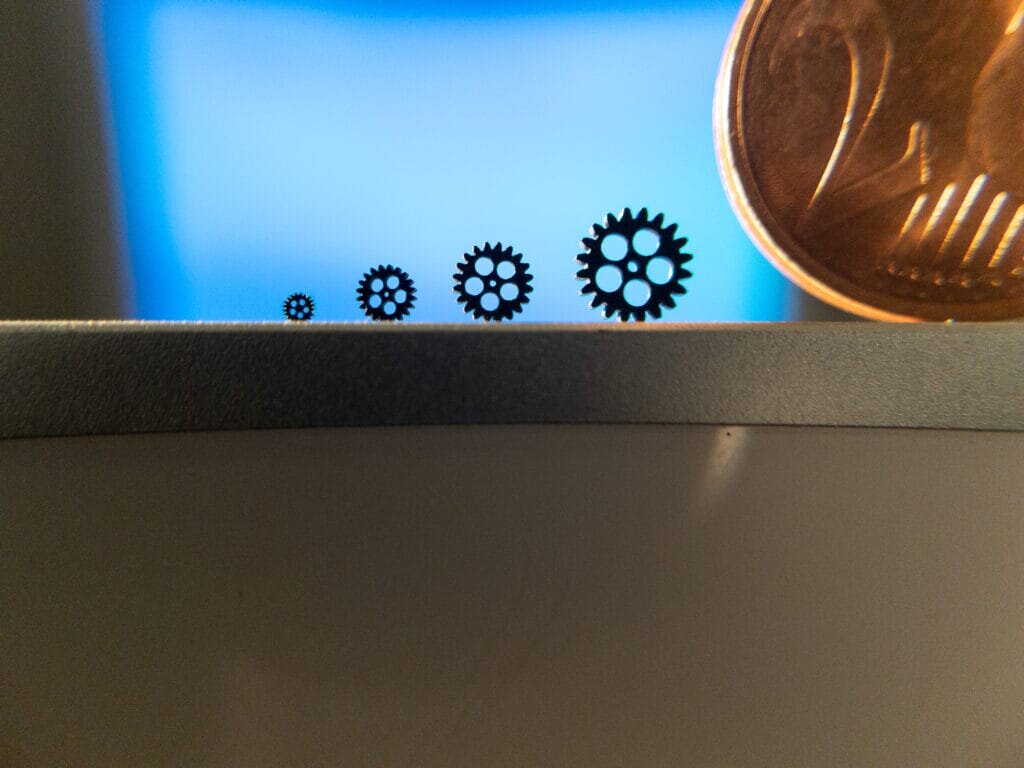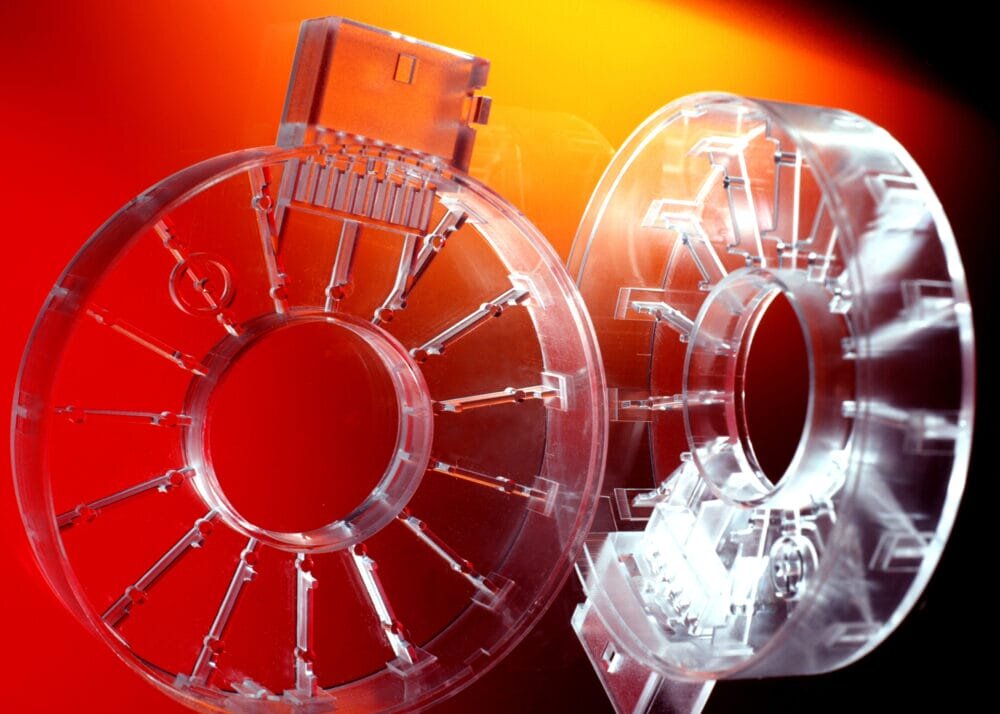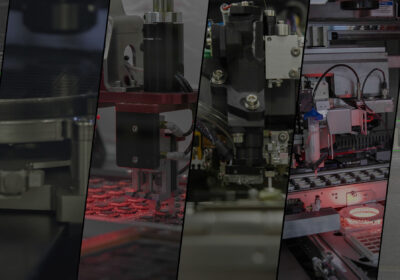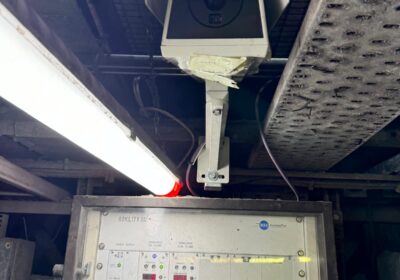Paul Runyan, VP Sales & Marketing, Accumold
In the realm of micro manufacturing, precision and innovation are paramount. Micro molding enables the production of minute components with intricate features that are often critical to the functionality of the final product. The precision achieved in micro molding is not just about miniaturization, it’s about reproducing complex shapes with exacting tolerances that are measured in microns repeatably. Such precision is crucial in applications where the slightest deviation can lead to significant performance issues, making micro molding a cornerstone of modern manufacturing for specialized applications.
Concurrently, the rise of 3D printing or additive manufacturing (AM) technologies has revolutionized prototyping and is beginning to impact production, offering unparalleled design freedom and rapid iteration capabilities. AM allows for the production of shapes and structures that would be impossible or prohibitively expensive with conventional methods. As 3D printing technologies advance, their integration with micro molding represents a transformative shift in manufacturing. The fusion of these two technologies through the use of new and sophisticated micro AM technologies not only enhances the capabilities of microscale production but also opens up new avenues for innovation. Engineers can now experiment with designs that were once unattainable, pushing the boundaries of what can be manufactured and accelerating the development of cutting-edge products.
HARMONIZING MICRO MOLDING WITH 3D PRINTING
The integration of 3D printing into micro molding manifests a synergistic relationship that leverages the strengths of both. Micro molding excels at mass-producing parts with incredible precision, a critical requirement in industries where the margin for error is virtually non-existent. It allows for the high-volume production of tiny, detailed components with consistent quality. On the other side of this symbiotic partnership stands 3D printing, celebrated for its rapid prototyping and design flexibility. It bypasses many of the constraints of traditional manufacturing methods, such as the need for complex tooling. This combination of technologies enables manufacturers to swiftly move from design to prototype, allowing for comprehensive testing and optimization of parts in a fraction of the time previously required.
The practical outcomes of this fusion are significant. By employing 3D printing for initial prototyping and even “soft” mold creation for prototype or small batch runs, manufacturers can experiment with complex designs and achieve the desired precision without incurring the high costs and time delays associated with traditional mold making. This streamlined process accelerates the development cycle, ensuring that products can progress from conceptual sketches to tangible parts swiftly. As a result, the time-to-market for new products can be reduced, facilitating a quicker response to market trends and consumer demands. This not only serves the needs of fast-paced industries but also fosters an environment where innovation can thrive, as manufacturers are able to iterate and refine products with greater agility and less financial risk. The synergy between micro molding and 3D printing is therefore not just a technical improvement but a strategic enhancement to the manufacturing process, enabling a more dynamic, efficient, and creative approach to product development.

ACCELERATING TIME-TO-MARKET
The integration of micro AM into the micro molding process yields a significant strategic advantage, particularly when it comes to enhancing market responsiveness. The most conspicuous benefit here is the dramatic reduction in time-to-market for parts produced through this method. Micro AM can produce soft molds in a fraction of the time of traditional steel molds, effectively condensing the product development cycle. This rapid tooling process means that prototypes can be quickly evaluated, refined, and approved for production without the usual lag, thereby compressing the timeline from concept to commercial availability.
This expedited tooling process afforded by micro AM not only catalyzes the prototyping phase but also propels a quicker transition to production for smaller batches of parts. When parts are needed in the millions, there is no replacement for micro molding at the moment, but the ability to swiftly produce and modify soft molds aligns perfectly with the dynamic nature of market demands, allowing manufacturers to adapt and respond with agility. As a result, products can be introduced into the market at a pace that keeps up with, or even outstrips, consumer expectations and competitive pressures. The implications of this are considerable, offering manufacturers the capability to innovate rapidly, capitalize on emerging trends, and satisfy the ever-shortening windows of market opportunity. Such responsiveness is not just a competitive edge, it may soon become an essential component of successful manufacturing strategies in the fast-paced and ever-evolving landscape of micro-part production.
ACCUMOLD’S PIONEERING APPROACH
Accumold stands as a prime example of a company harnessing the potential of 3D printing to complement its micro molding capabilities. Specializing in the production of micro-sized components with intricate details, Accumold has integrated 3D printing to refine its prototyping and to an extent its production processes. Accumold now has two micro AM machines in house from Nano-Dimension.
On the prototyping side of things, the use of Nano Dimension’s micro AM technologies significantly enhances the prototyping stage in a conventional high-volume mass manufacturing scenario by enabling rapid iteration and testing of designs, reducing development time and costs. As already mentioned, micro AM allows for the creation of complex geometries and customized features that are difficult or impossible to achieve with traditional manufacturing methods, enabling engineers and designers to experiment with innovative solutions and optimize product functionality. Additionally, AM facilitates the direct fabrication of functional prototypes, closely mimicking the properties of the final manufactured parts, thereby improving the accuracy of performance testing and reducing the risk of costly design errors in the mass production phase.

On the production side, the ability to make molds via micro AM unlocks new business possibilities for manufacturers that up until this point have been restricted to the use of long lead time and expensive traditionally manufactured micro mold tools for the achievement of any volume of molding, from prototype runs all the way through to mass manufacture. Accumold sees the potential here which stimulates the business case for a process chain that includes the production of soft tools via micro AM, with a dramatically shorter lead time of about a few hours from file to injected part and at costs reduced from thousands of dollars to tens.
Using micro AM to produce soft tools capable of manufacturing a few hundred parts per tool opens up the possibility of small and even medium batch manufacturing. This is a because the platform is able to accommodate the manufacture of multiple small tools in each build, and so numerous replacement tools can be produced at extremely low cost. While a precise traditionally made mold tool for high volume runs may take weeks if not months to make and costs thousands of dollars, in the future we may be able to make hundreds of micro-AM produced soft tools which will wear out significantly more quickly, but can be replaced by another soft tool made in hours and costing a few bucks. In addition, each tool can be adapted as required, opening up the possibility of speed to first part out, and the ability to correct during the manufacturing process according to market and customer needs.
SUMMARY
As we look into the future of manufacturing, the continued integration of 3D printing and micro molding holds the promise of igniting substantial advancements. This integration is poised to not just enhance but potentially redefine the manufacturing paradigms that have stood for decades. The evolution of materials suited for micro-scale additive manufacturing, alongside advancements in the technology itself, heralds a future where the complexity of micro molded parts will surge, yet the efficiency of their production will simultaneously increase. This evolution will drive down costs, making sophisticated micro components more accessible and feasible for a broader range of applications. The manufacturing landscape is approaching an era where the ability to produce complex parts rapidly and cost-effectively will not be an extraordinary feat, but a standard expectation.








